March 15, 2018
Mysteries & Wonders
Go out on a ledge for your bees!
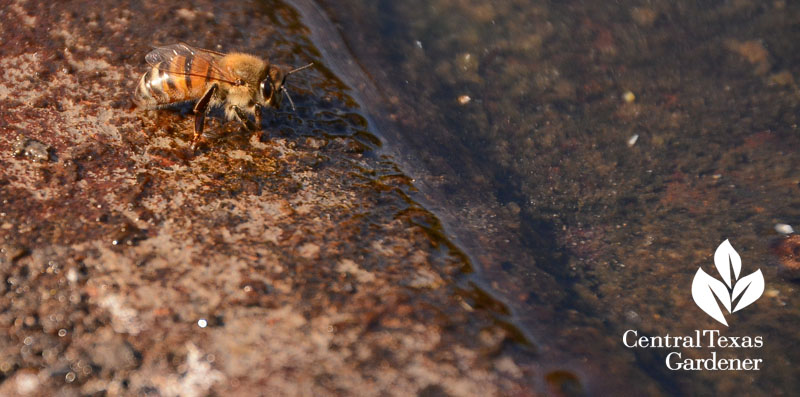
Our Christmas present one year was a birdbath designed by Zach Zamora of Variance Design. We wanted it tall enough to be somewhat safe against stray cats. Zach’s renowned for his sustainable, living ecosystems in museums, science centers, zoos, and aquariums, along with with unique garden art. He understood how to create progressive levels for insects and birds small and large.
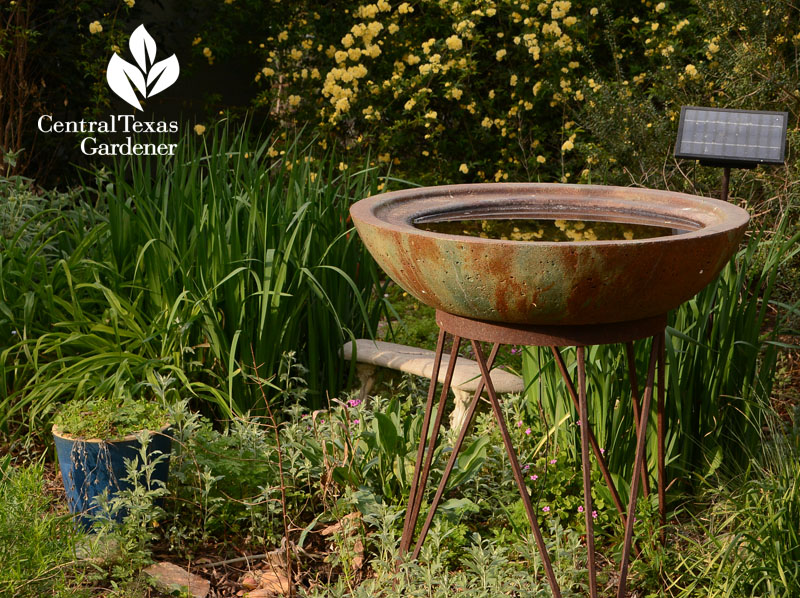
The outermost ledge is a bee beach where they can sip without drowning (bees can’t light on water). At nightfall, I fill it back up for morning’s splashing birds, leaving that ledge clear. By late afternoon, so many birds have swooped out enough water that the bee beach is even wider.
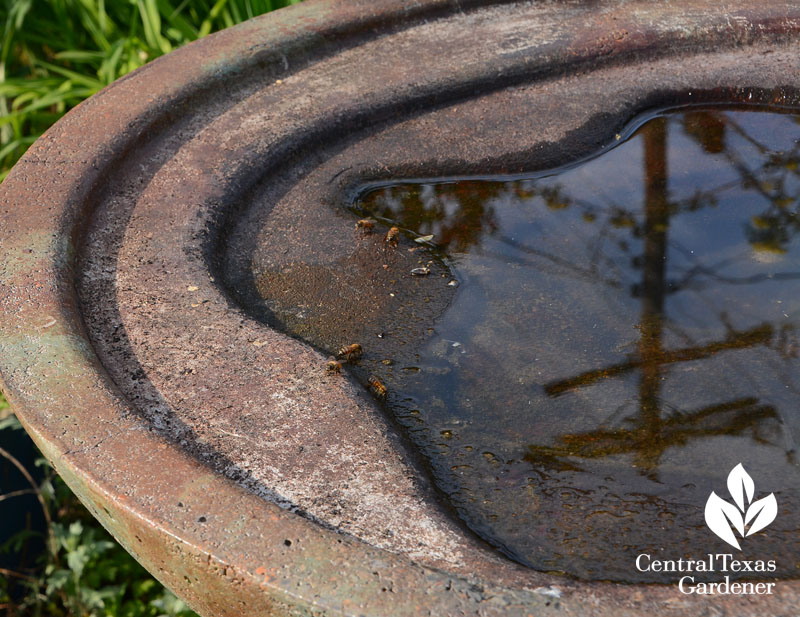
It’s the bees’ watering hole between meals, like on fat and fluffy mountain laurel flowers.
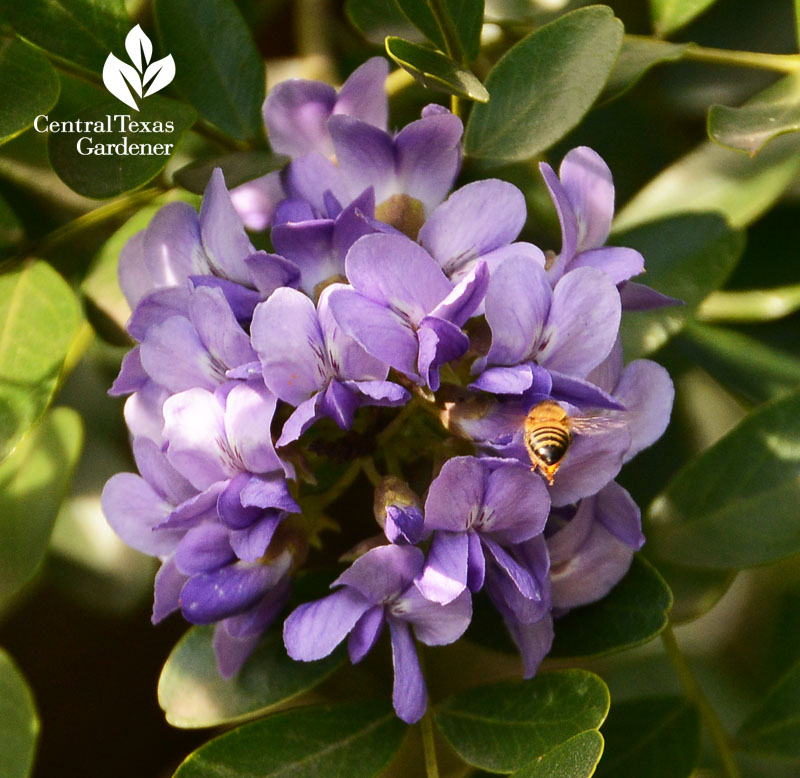
Bees are seeing red (or pink) to feast on redbuds catching our eyeballs all around town. Horticulturist Greg Grant says that genetic diversity is why we see such a color range. The owner of this tree said that his started out dark pink/red and gradually faded.
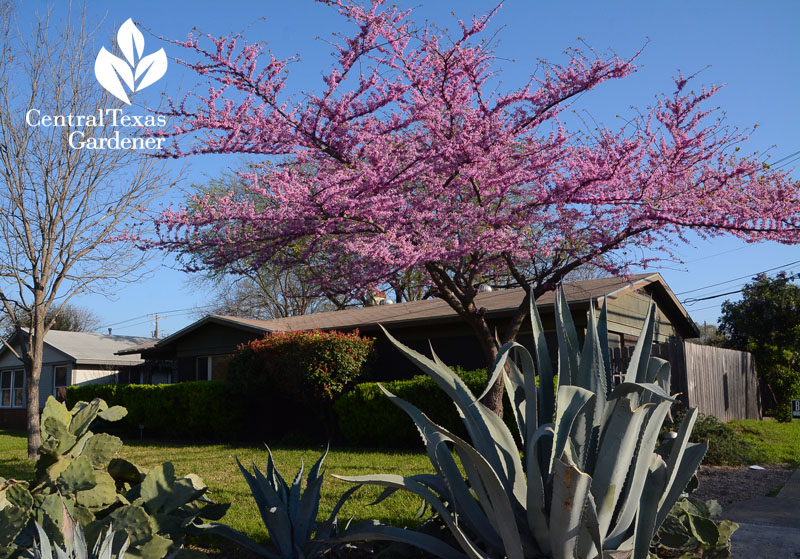
Not to be outdone, Lady Banks rose is showering flowers, even on curbs where it’s resided for years without any babying.
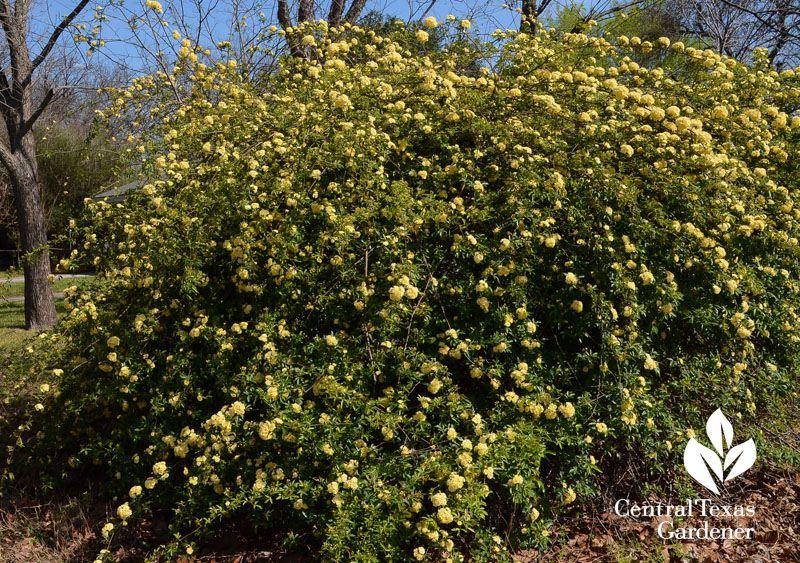
This is one tough cookie, I’ll tell you.
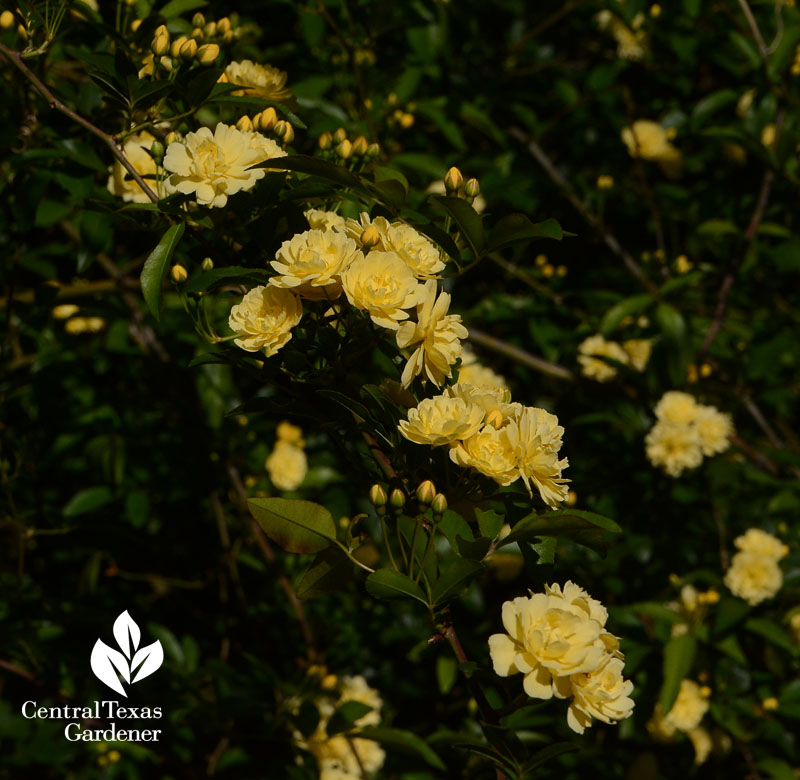
Mine is hiding a chain link fence, out of reach of the water hose. I’ll shape it up after it blooms—this is one rose you don’t want to prune in February.
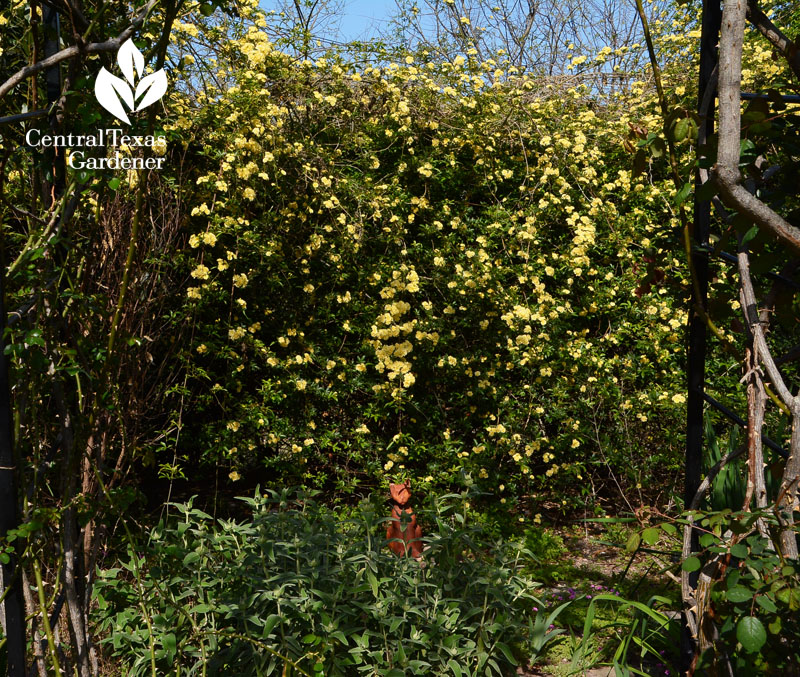
So, have you ever planted something that’s a mystery a few years later? This narcissus popped up on slender jonquil leaves between bearded irises.
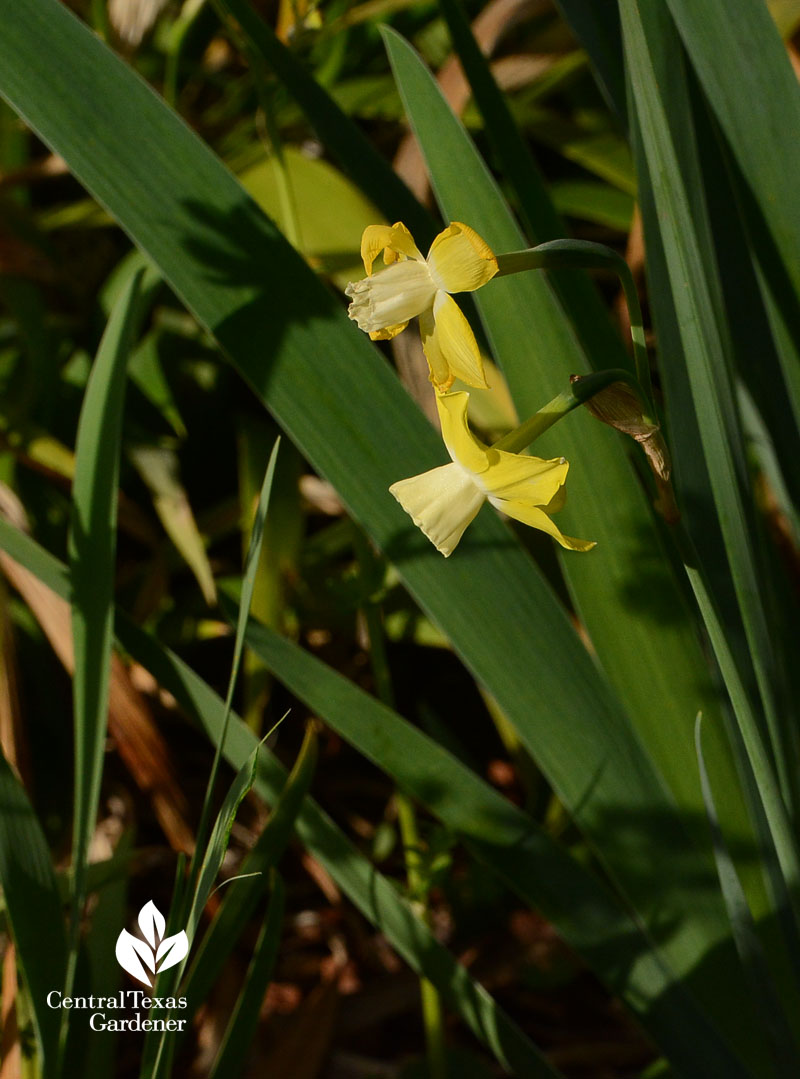
Greg Grant told me that it could be ‘Pipit’. Hmm—did I ever get one? Not on my spreadsheet, but you know how that goes.
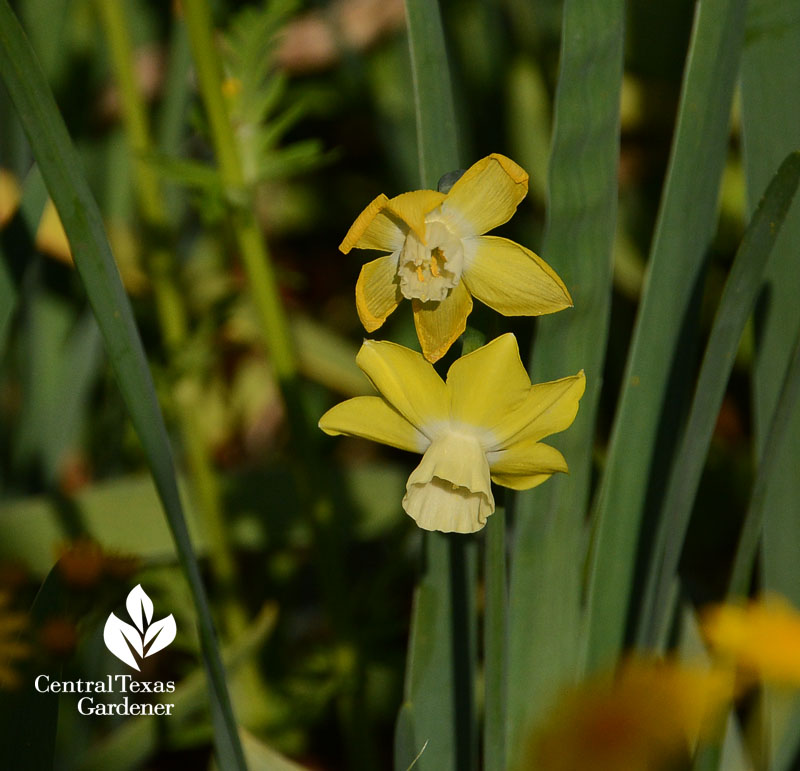
Anyway, it shows up every year, here with native golden groundsel (Packera obovata).
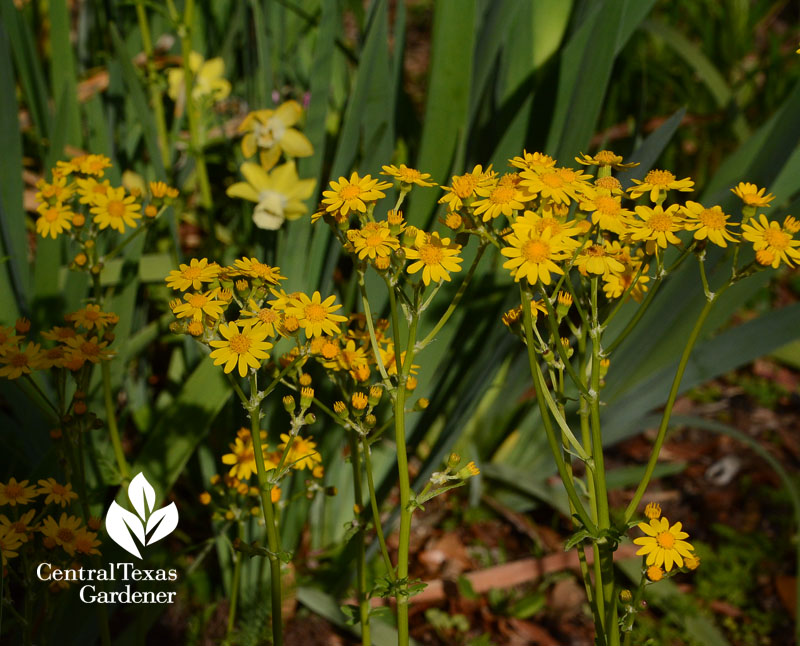
Here’s the most bizarre thing! A few years ago, a leafy thing showed up among my plumbago and shrimp plants. I thought it was a bird food plant, but I left it alone. Then one year it sprouted branches.
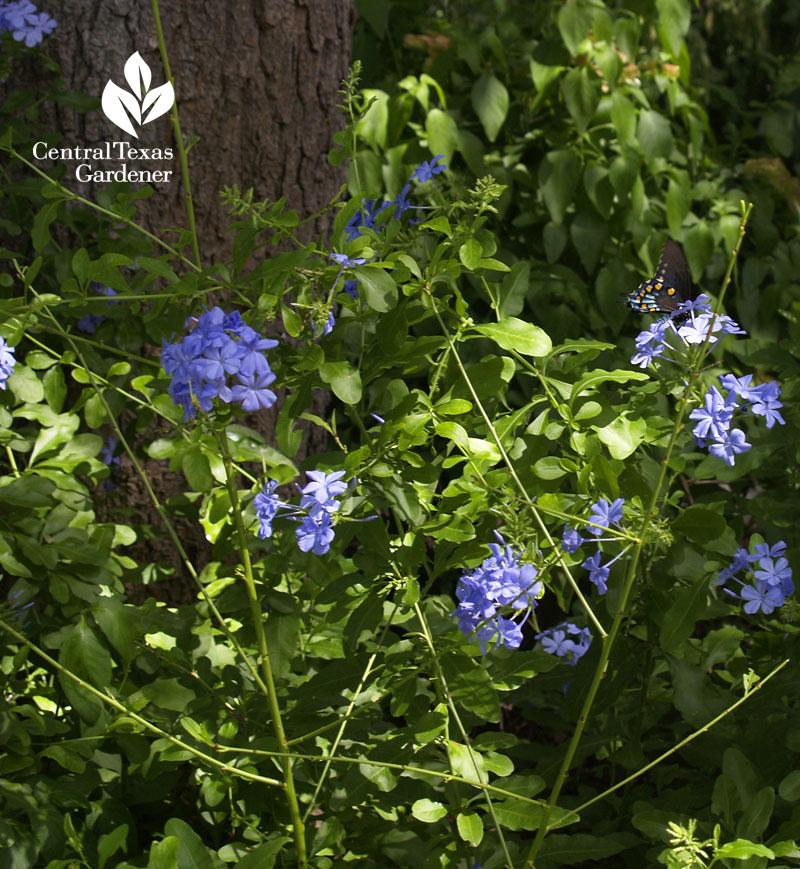
You never know what you’ll find during winter cleanup: maybe those Felcos you lost last summer! When I cut things back recently, I discovered that the mystery plant’s a tree, obviously a Prunus of some type.
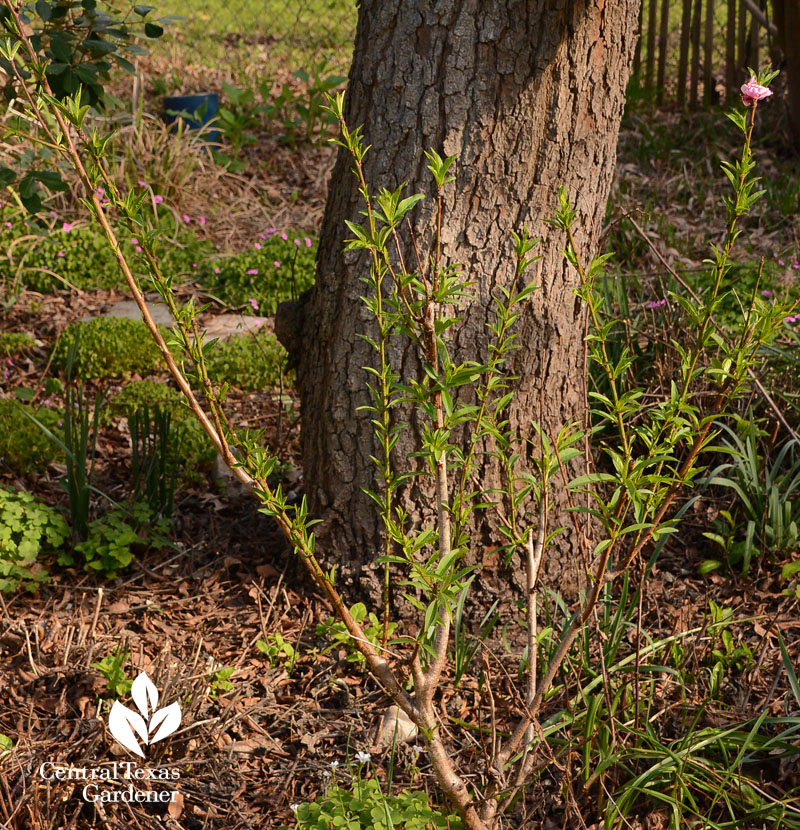
Who knows where it came from or what it really is, but obviously, it’s a survivor that’s claimed its home.
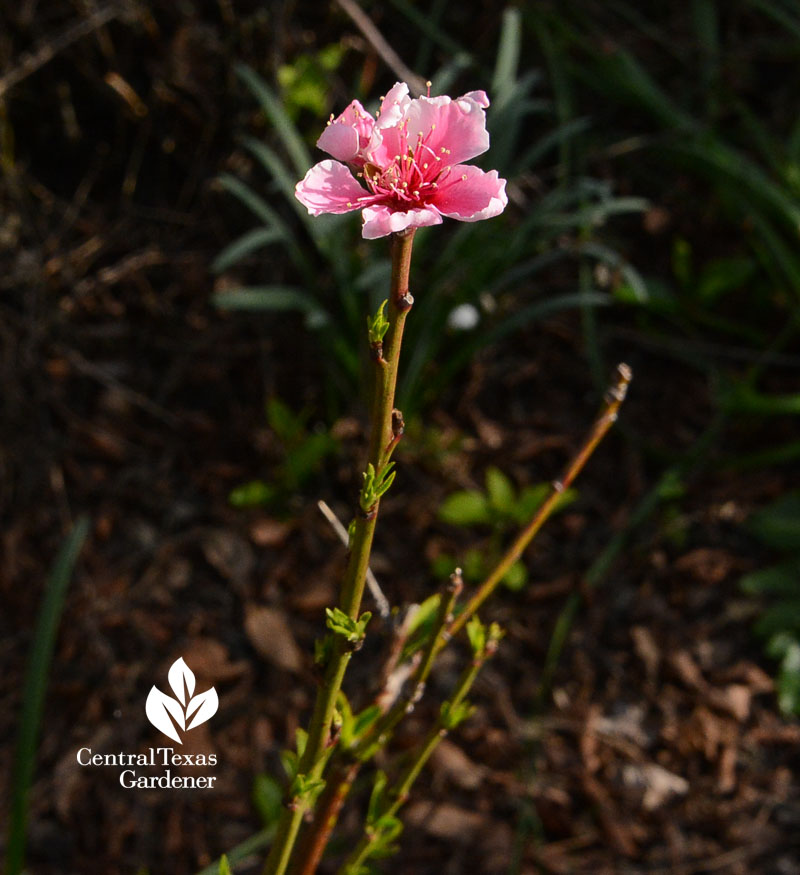
The only mystery with native spiderwort (Tradescantia gigantea) is what color it comes up with this year or where it lands. This one pleases the bees while Yucca gloriosa ‘Variegata’ maintains structure for its ephemeral companions.
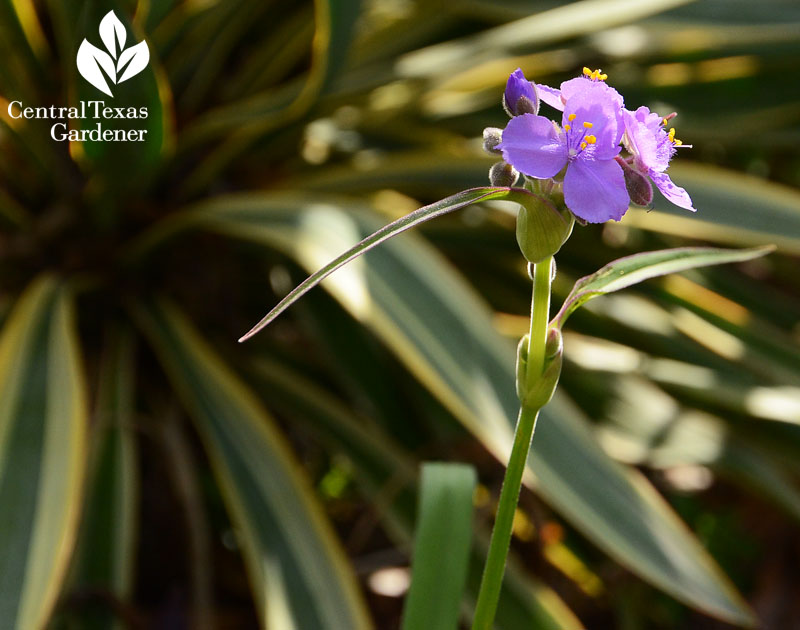
I don’t have much luck with Euphorbia rigida, since it rots in heavy duty rains, but since it’s been so dry, this potted one did its spring thing against a muhly grass I’ve yet to primp.
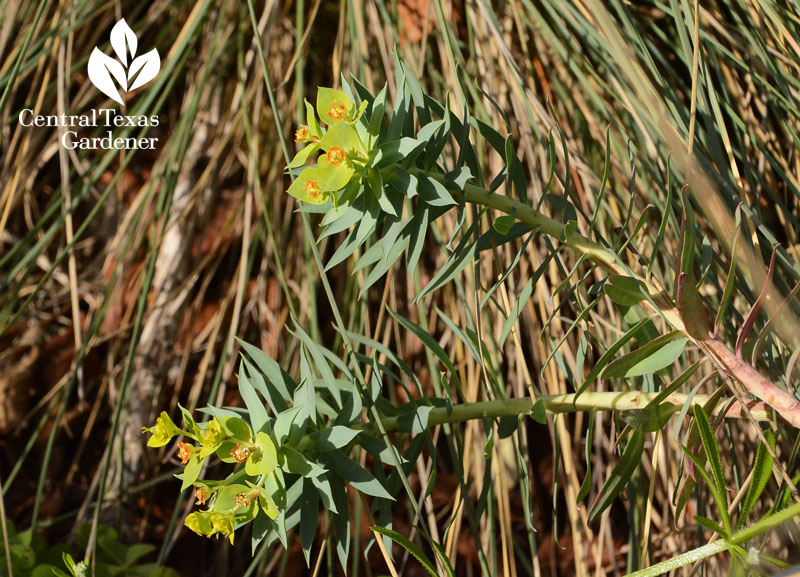
So, you know how pets love a newly turned bed with its soft composted soil. This Waco gardener (her story on CTG this spring) solved the problem with leftover chicken wire from her cute coop to deter scratching cats.
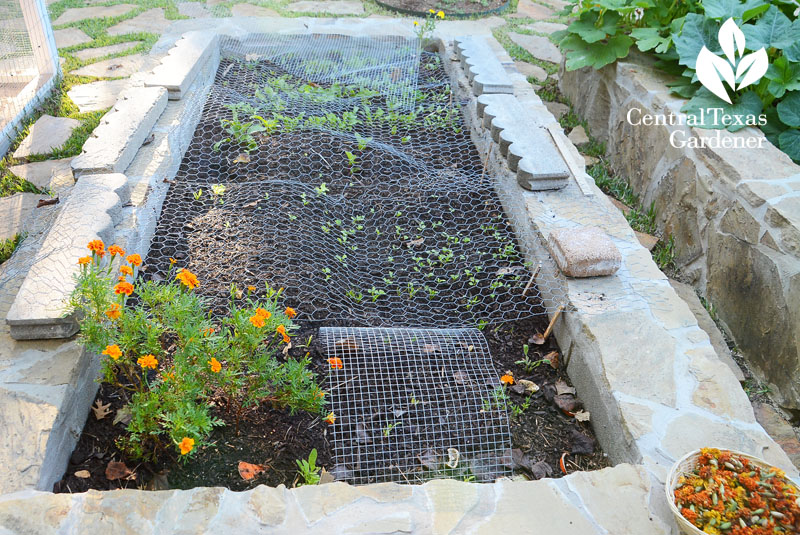
She removes it once seedlings are mature and the cats leave it alone. Since snails find their way in, she crumbles eggshells around new plants to fend them off.
In case you missed it, this week we repeat our segment on choosing a rainwater collection system and visit an old garden made new again.
Thanks for stopping by! See you next week, Linda
tags:

